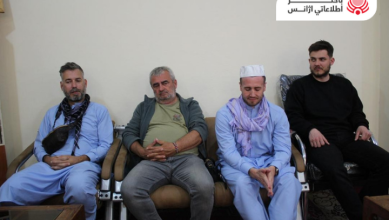
Wednesday, February 10, 2016
Kabul (BNA) The role of cultural heritage is a hot topic. Can it unite a nation shattered by war and civil strife? Can it become a rallying point only if a sense of nationhood already exists? In what sense is it “heritage”, if at all? Even those bent on destroying it are proof that monuments, sculptures and art have heritage power. The most successful heritage project in a war-torn land is not the restoration of a statue or a building. It is the restoration of a garden in the urban heat of Afghanistan. In Kabul, the recently restored Garden of Babur, the Baghe Babur, has just attracted its three millionth visitors since the beginning of its restoration in 2008. Until then, I and others had viewed the project with misplaced doubt. This year the plan is to achieve world heritage status. Babur, the garden’s founder, was a remarkable person, the most prolific garden king in history. Born in 1483, he was a descendant of Tamerlane and became the first of the Mogul emperors. He is author of an autobiography which still enchants readers with its love of flowers and landscape, its poetry, its tales of daring and its frank admission of the pleasures of becoming drunk and holding parties to that end, accompanied by cakes of hashish while Babur and his friends mellow out among nature’s beauties. His pen portraits of friends and relations are as sharply drawn as priceless contemporary Mogul miniature paintings, some of which depict Babur himself, involved in a garden’s design. Young Babur grew up near Samarkand in what is now Uzbekistan. In 1504 he captured Kabul, but in 1526 went east to conquer parts of northern India. He died at Agra in 1530 but wished to be buried in Kabul whose climate and landscape he much preferred.
In 1544 his widow sent his body back there and he was buried in one of the 10 landscape gardens which he had personally ordered to be built in the city. In May 1972, when red and white roses still blossomed all over Kabul and bottles of iced fizzy drinks were sold with colored marbles as corks, I first paid my respects at Babur’s garden tomb. The site had been repeatedly altered and his monument on the top of the terraced hill was not appealing. Most of the garden below had disappeared and his memorial was only an inscribed slab beneath an ugly canopy of later date. In the civil wars of 1992 the garden was on one of the front lines. Trees were cut down, waterworks were ruined, buildings were burnt by mujahedin and landmines were not removed from the site until 1995. After the Taliban were forced out of Kabul in 2001, the Aga Khan and his Trust for Culture guided plans for a full restoration of Babur’s garden, seeing it as a focal point for a city which badly needed a new start. Funds from Germany, the US and other governments have helped the ambitious project, which have been a triumph and a multinational success to a degree that is not always realized. Designs for restoring the terraces were drawn up by the admired Indian landscape architect Mohammed Shahir. Archaeological research was led by Ute Franke Vogt of the German Archaeological Institute, who duly found traces of the original line of pools and long-lost terraces.
Jolyon Leslie, born in South Africa, led much of the work on site for the Aga Khan’s trust. Marble was brought south from Babur’s native Fergana in Uzbekistan and was carved into shape in Delhi. Most important, the garden has been planted and now maintained by devoted Afghan gardeners. Its leading garden engineer, Abdul Latif Kohistani, has had a crucial role. The aim has been to plant the garden with as many local species and plants known to Babur as possible. More than 5,000 are now on site, including roses, pistachios and the purple-flowered Judas trees which Babur described with love. To find plants, Kohistani set off into the nearby hills and engaged with local plant-growing associations as far afield as Herat. Despite years of war such groups still existed and now, Kohistani presides over 11 gardeners and 13 support staff. Much of his plant-collecting was done with the help of a simple motorcycle, visiting hill sites where he knew he would find what he needed. Since November the garden and its maintenance have been handed over essentially to Afghan management and the Baghe Babur Trust. Outsiders, aware of Iraq, might be apprehensive about the garden’s future. Babur’s heritage has not been uncontroversial. In India he has been demonized by the Hindu nationalist Bharatiya Janata party (BJP) as the alleged desecrator of what it claims was a historic Hindu site on which a Muslim mosque was built. The now ruined mosque, the Babri Masjid—which was torn down in 1992—has an inscription inside it which names Babur but does not prove that he ordered the building himself.
Babur was a conqueror of Kabul, an Uzbek, not a Pashtun or Tadjik. In eastern Uzbekistan, at Andijan, there is already a big statue of Babur, a museum, paintings of his deeds and a fine hillside garden with a replica of his tomb in Kabul. Babur was a Sunni Muslim who also favored Sufi saints. The Aga Khan, of course, is Isma’ili—a Shia branch of Islam—as suspicious mullahs in Kabul complained in 2002. In fact, the handover and the garden are working very well. One reason is the role of the committed Afghan gardeners and Kohistani himself, still in charge of more than 5,000 recently planted species. Gardening for food and beauty is deeply rooted in parts of Afghan society. I would gladly welcome some Afghan gardeners to come and work on London’s Garden Bridge if ever that uneasy project gets off the ground. Another good reason for the success is the garden’s value as a secure and beautiful urban space. Much of the $250,000 in the garden’s maintenance budget is raised from ticketed events at the garden. There have been festivals of Pashtun dancing, though Babur was no Pashtun. There has even been western drama; a staging in 2005 of Shakespeare’s Love’s Labour’s lost in translation. This remarkable venture is recorded in a touching book, A Night in the Emperor’s Garden by Qais Akbar Omar and Stephen Landrigan. “Afghans do not do tragedy,” the Afghan actors told their French director, after all their tragedies of the past 40 years. They acted comedy instead and entranced their audiences in Babur’s garden, although the scene in which young men pretend to be Russians had to be rewritten for Afghan sensibilities.
A Night in the Emperor’s Garden was reissued in November last year. The updated edition makes chilling reading: a tale of murder, threats and the enforced exile of actors and actresses who had played Shakespeare to such acclaim in the emperor’s garden but then found them caught in a Taliban backlash. The present danger for the garden is not Taliban puritanism but a phenomenon better known in Britain: the absence of effective planning control on new buildings. The garden and its long central axis of water pools and paving are surrounded by a secure wall. Against it, high-rise blocks are going up apace, nestling for safety against this cultural icon. In their own public gardens, British visitors find invaluable space for exercising their dogs and their keep-fit selves, letting their children run free and for meeting their lovers on neutral ground. Afghans have social needs too, accompanied by their relief that one urban space is secure, lovely and a link with the past. As Jolyon Leslie returned to his heritage work in Afghanistan, his home for about 20 years, he told me: “A nation is not alive unless its culture is alive.” There are other ways to enhance its life besides museums with histories of the world in 100 objects. Around a few restored gardens, a nation’s threatened sense of itself can unite.




